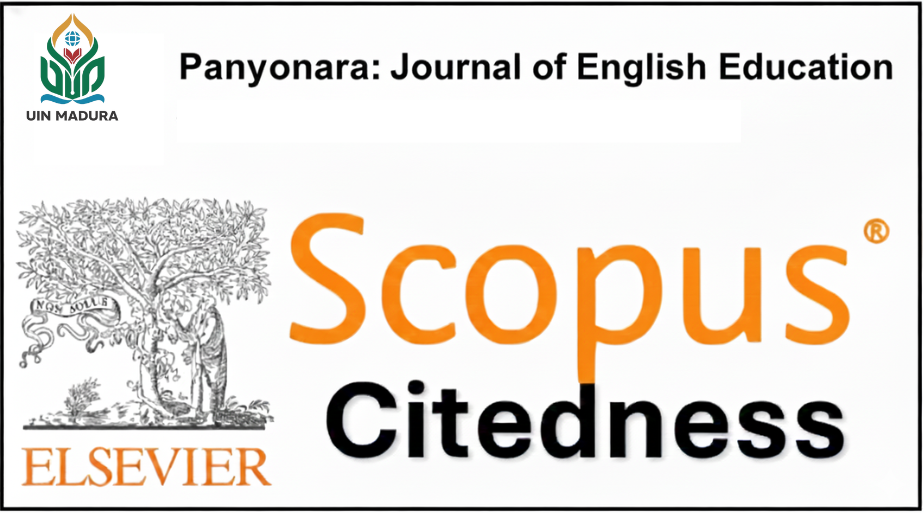Author Guidelines
Manuscript Preparation
- Language
The language of the manuscript must be in English (either American or British standard, but not the mixture of both). - Language Length of Manuscript
The length of the paper should not exceed 25 pages of A4 paper and with (Top and Left Margin: 3.5 cm, Bottom, and Right Margin: 2,5 cm), Paper containing more than 25 pages words will be returned to the author(s) to abridge. Authors are urged to write as concisely as possible, but not at the expense of clarity. Articles should be typed in Exactly 17 spaced, in Cambria size 11 on one side of the paper only (except title page - see the template).
Contents
- TITLE PAGE
The title page is a separate page, before the text. It should include the following information:
- Title
The title should be concise and informative. Try to avoid abbreviations and formulae where possible. - Author’s names and affiliations
Please indicate the given name and family name clearly. Present the authors' affiliation addresses (where the actual work was done) below the names. Indicate all affiliations with a lower-case superscript letter immediately after the author's name and in front of the appropriate address. Provide the full postal address of each affiliation, including the country name, and email address. - Corresponding author
Clearly indicate who is willing to handle correspondence at all stages of refereeing, publication and also post-publication. Ensure that telephone numbers (with country and area code) are provided in addition to the e-mail address and the complete postal address. - Sponsoring information (if any)
If the research is sponsored or supported by an organization, please indicate it. - Abstract
A concise and factual abstract is required (maximum length of 150-200 words). It starts with the general statement of the topics, purpose of the study, research method, main findings, and conclusion. An abstract is often presented separately from the article, so it must be able to stand alone. References should, therefore, be avoided, but if essential, they must be cited in full, without reference to the references. - Keywords
Immediately after the abstract, provide a maximum of 4 keywords, avoiding general and plural terms and multiple concepts (avoid, for example, 'and', 'of').
- Title
- MAIN HEADINGS
- Introduction
Provide an adequate background. Explain how you addressed the problem, and why it is important to answer the problem, and also clearly state the aims of the study (how you think their answer would contribute to the existing scholarship on the subject). - Literature Review
Write any related theories briefly and the relation of your research article with other research(s), especially from the most relevant theories, and high reputation journals. - Method
Explain briefly the research method involving research design, population and sample, research instruments, data collection procedures, and data analysis. A very detailed description of your research method is not necessary to write. - Results and Discussion
The result and discussion should be written in different parts. They should be presented continuously start from the main result until supporting results and equipped with a discussion. - Conclusion
The conclusion should be explained clearly. Suggestion (if any) placed after conclusion contains a recommendation from the research results.
- Introduction
- REFERENCES
Author(s) should follow the American Psychological Association 6th Edition in referencing.Citations in the text
Please ensure that every reference cited in the text is also present in the reference list (and vice versa). Avoid citation in the abstract. Unpublished results and personal communications should not be in the reference list but may be mentioned in the text. Citation of a reference as 'in press' implies that the item has been accepted for publication, we require the citation by using Mendeley or Zotero system.
Reference List
References should be arranged first alphabetically and then further sorted chronologically if necessary.
Examples:Reference to a book:
Endnote:
(Richards & Renandya, 2002: 10)
Bibliography:
Richards, J. C., & Renandya, W. A. (2002). Methodology in Language Teaching: An Anthology of Current Practice. Cambridge: Cambridge University Press.
Reference to a Journal Publication:
Endnote:
(Poedjiastutie & Oliver, 2017: 6)
Bibliography:
Poedjiastutie, D., & Oliver, R. (2017). English Learning Needs of ESP Learners: Exploring Stakeholder Perceptions at an Indonesian University. TEFLiN, 28(1), 1–21. http://dx.doi.org/10.15639/teflinjournal.v28i1/1-21
Reference to a web source:
Endnote:
(Irina, 2010)
Bibliography:
Irina. (2010). Using Youtube Videos in Teaching English. Retrieved 6 April 2011, from http://www.thoughts.com/Irina1989/usingYoutubevideosinteachingEnglish
Other Important Guides
- Subdivision of the article
Divide your article into clearly defined sections, See the template. - Table and Figures
Present tables and figures should be clear, readable, and editable. - Author must write phone number on menu "Comment for Editor"















